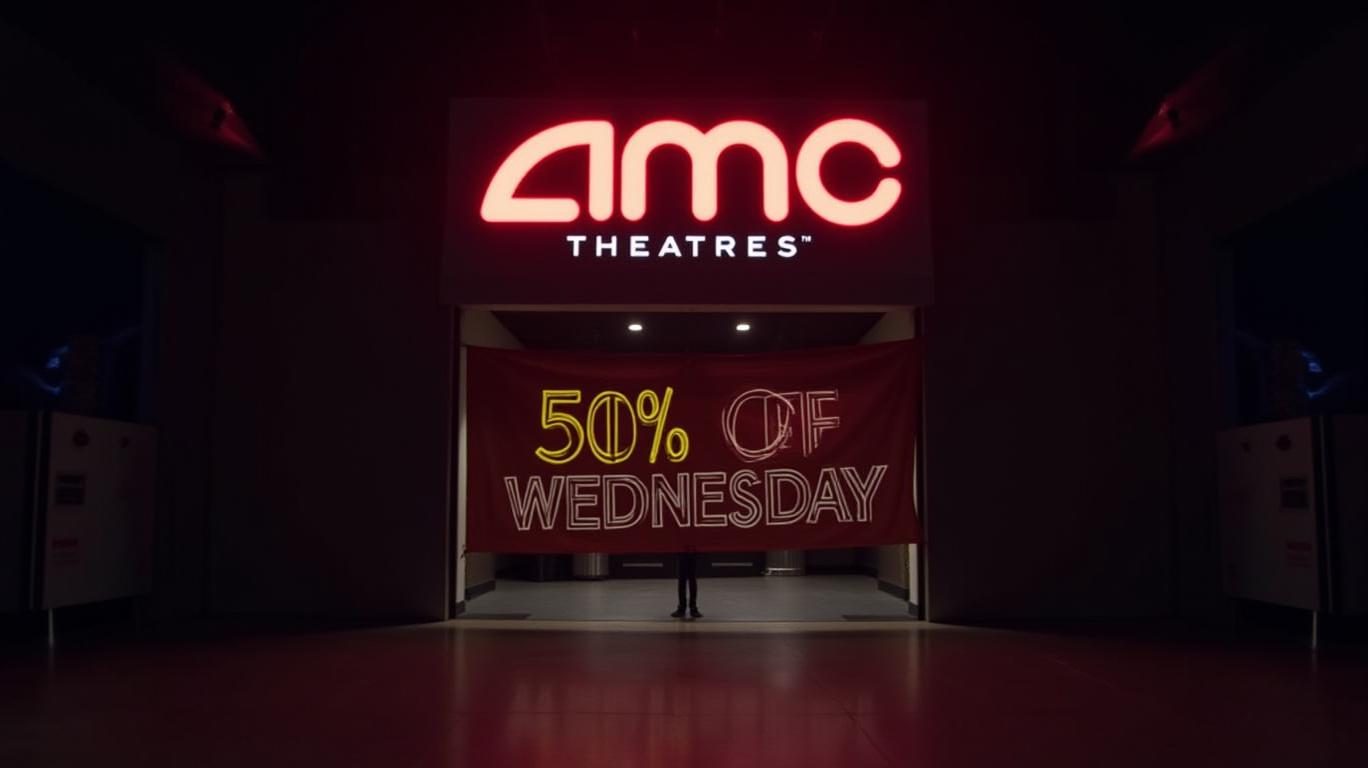AMC's Box Office Rebound Sparks Stock Volatility Amid Financial Struggles
Theatres are buzzing again, but AMC’s financials tell a different story. A surge in box office revenue for April 2025—doubling year-over-year—has reignited investor optimism, even as the company reported a $202 million net loss in Q1. This week’s rollercoaster for AMC Entertainment (NYSE: AMC) reveals a stark reality: its fate remains tied to blockbuster films and its ability to navigate debt.

The Earnings Report: A Mixed Bag
AMC’s Q1 2025 earnings, released May 7, underscored the challenges facing the cinema giant. Revenue fell to $862.5 million, down 9.3% year-over-year, as attendance dropped 11.8% in the U.S. CEO Adam Aron framed the quarter as an “industrywide anomaly,” citing the lowest domestic box office since 1996. Yet shares plunged 2% in after-hours trading, reflecting skepticism about AMC’s path to profitability.
Ask Aime: "Is AMC's Q1 2025 earnings report a sign of the industry's future?"
“AMC is banking on a second-half recovery, but its cash reserves ($379 million) are dwindling fast,” warned analyst Jason Bazinet of Citi, who lowered his price target to $2.30. The company’s cash burn also worsened: operating activities consumed $370 million in Q1, up from $188 million in 2024.
The Box Office Boom—and Its Limits
Aron highlighted a dramatic turnaround starting April 1, when U.S. box office revenue doubled year-over-year. Films like A Minecraft Movie and Sinners drove the surge, while April’s “second-highest weekend since 2019” signaled a return to pre-pandemic patterns. AMC’s premium seating formats (IMAX, Dolby Cinema) saw record adoption, accounting for 33% of attendance during the Minecraft opening.
Yet this recovery hasn’t yet translated to sustained stock gains. While Aron projects 2025 as the strongest box office year since 2019, AMC’s reliance on tentpoles like Jurassic World Rebirth (July) and Superman (November) leaves it vulnerable to flops. “AMC’s margins depend on hitting 100% of its premium seats for blockbusters,” noted analyst Mike Hickey.
Debt, Tariffs, and the Streaming Threat
The company’s $4.3 billion debt looms large. AMC plans to refinance $500 million in convertible bonds due in 2026, but rising interest rates and the risk of U.S. tariffs on foreign-made films (proposed by President Trump) add new uncertainties. While the White House has delayed action, such tariffs could disrupt Hollywood’s global production, limiting the high-budget films AMC needs to draw crowds.
Meanwhile, streaming continues to erode theatre traffic. AMC’s Q1 global attendance fell 10%, with concessions sales dropping 12% as fewer people buy snacks. The company’s AMC Stubs loyalty program and A-List subscriptions—key to its record per-patron revenue—may not offset these trends indefinitely.
Conclusion: Betting on Blockbusters
AMC’s future hinges on two variables: box office hits and debt management. The company’s stock briefly rallied on April’s box office data but remains near its 52-week low of $2.45. While premium formats and summer blockbusters like Mission: Impossible could boost attendance, AMC’s cash burn and debt risks limit its upside. Investors should weigh the potential reward of a box office boom against the likelihood of further financial strain.
As Aron himself admitted, “We’re not out of the woods yet.” For now, AMC’s story is one of cautious optimism—rooted in popcorn and popcorn films.
Word count: 698










